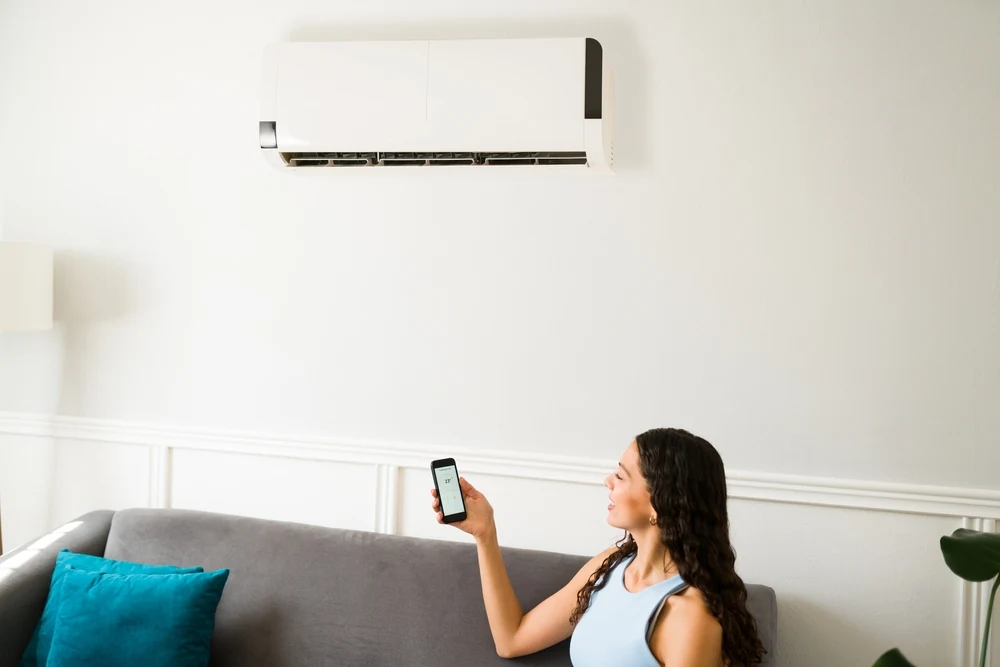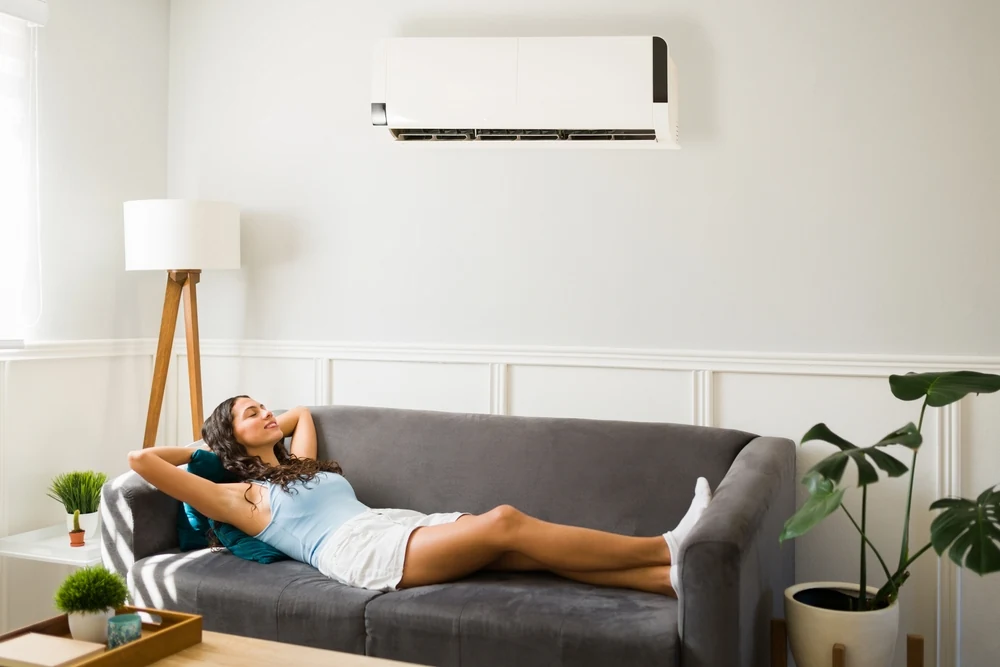Homeowners today are more conscious of sustainability and energy efficiency than ever. With advancements in technology and smart home innovations, modern systems now go far beyond simple temperature control. The focus of All Coast Air Conditioning is on helping homeowners enjoy a balance of cost savings and environmental responsibility through cutting-edge systems designed for the future.
As the year ushers in a new era of smarter living, many of the latest systems are built to integrate with connected homes and reduce energy use. From voice-activated controls to predictive maintenance and zoning options that tailor comfort to your lifestyle, the upgrades available today are transforming how people experience climate control in their homes.

The Latest Energy-Efficient Features in Air Conditioning
Energy efficiency has become one of the most important considerations for homeowners looking to upgrade their air conditioning in the Central Coast. Modern innovations not only lower power consumption but also reduce greenhouse emissions while maintaining performance. With stricter energy standards being introduced, manufacturers are continuously finding new ways to boost system efficiency and make homes more sustainable.
Variable-Speed Compressors and Their Benefits
Variable-speed compressors are now standard in many high-end systems, offering better performance and improved control. Instead of running at full speed all the time, they adjust output to match demand, resulting in smoother operation and greater energy savings.
- Variable-speed compressors provide precise temperature control that eliminates fluctuations and ensures consistent comfort throughout the day, even during extreme weather conditions.
- They significantly lower power consumption by adjusting performance in real-time based on the exact cooling or heating needs of each room.
- These compressors also extend system life by reducing strain on internal components and minimising frequent start-stop cycles.
Advanced Heat Exchange and Thermal Storage Technologies
Modern systems now utilise improved heat exchange mechanisms and thermal storage to optimise temperature regulation. These technologies maximise efficiency during both cooling and heating cycles while ensuring steady indoor comfort.
- High-performance coils and refrigerants transfer heat more effectively, resulting in faster temperature adjustments and reduced power draw.
- Thermal storage systems absorb excess energy during off-peak hours, releasing it later to reduce energy demand during peak times.
- These innovations help balance overall energy use, leading to lower utility bills and reduced environmental impact for homeowners.
Eco-Friendly Refrigerants and Environmental Compliance
With growing attention on sustainability, the industry has moved towards safer and more environmentally responsible refrigerants. These new formulations maintain system performance while reducing harmful emissions.
- Modern refrigerants comply with global environmental standards and phase-out regulations that protect the ozone layer and minimise carbon output.
- They improve system efficiency by allowing faster cooling cycles and maintaining consistent pressure within the system.
- By switching to eco-friendly refrigerants, homeowners contribute to environmental protection while ensuring their system meets upcoming compliance requirements.
Smart Control and Zoning: What’s Possible Now?
Smart control technology has redefined how homeowners interact with their systems. New features allow for convenient automation and improved energy management, all accessible through simple interfaces. With greater control and flexibility, these upgrades are making modern systems more responsive and user-friendly than ever.
Voice and App-Based Control Systems
Voice- and app-based systems have quickly become a standard feature in modern homes. They allow users to adjust temperature settings and monitor energy use remotely.
- Integration with virtual assistants enables homeowners to manage comfort levels using voice commands or smartphone apps even when away from home.
- These systems track temperature preferences over time, creating personalised comfort profiles that adapt automatically.
- Notifications alert homeowners when filters need cleaning or maintenance is due, helping extend system longevity.
Multi-Zone Control for Customised Comfort
Zoning systems are an effective way to personalise comfort across different rooms. They divide the home into multiple temperature zones, giving each area independent control.
- Multi-zone systems allow individual temperature adjustments for living areas and workspaces, catering to varying preferences throughout the day.
- They prevent wasted energy by directing airflow only to occupied rooms, reducing unnecessary energy consumption.
- With sensors monitoring occupancy and temperature, the system maintains a balanced and comfortable environment throughout the home.
Learning Algorithms and Predictive Adjustments
Modern systems are now capable of learning from homeowner behaviour to predict and adjust comfort settings automatically. These algorithms optimise performance without manual input.
- Predictive systems analyse patterns such as occupancy, time of day and weather forecasts to make precise adjustments.
- They help reduce energy waste by minimising overcooling or overheating in unoccupied spaces.
- These adaptive systems continuously improve performance over time, creating a truly intelligent and efficient home environment.
Comparing 2025 Models: What’s New for Central Coast Homes?
Homeowners upgrading in 2025 will find more advanced models featuring improved connectivity and efficiency. Manufacturers have designed these systems to adapt better to local climates and changing user needs. For many homes, this year’s releases promise to deliver a blend of control and sustainability.
Compact Systems for Modern Homes
As home designs evolve, compact systems have become increasingly popular for space-conscious households. These units are designed to deliver full power in smaller footprints.
- Slimline units can fit into tight ceiling cavities or outdoor areas without compromising airflow or efficiency.
- Compact systems operate quietly, making them ideal for homes where noise reduction is a priority.
- Despite their smaller size, they maintain strong output levels suitable for both large and small properties.
Hybrid Heating and Cooling Units
Hybrid systems combine traditional and renewable energy sources to achieve optimal performance and efficiency. They are ideal for homeowners seeking eco-friendly and cost-effective solutions.
- These systems switch automatically between energy sources to minimise consumption based on temperature and availability.
- They offer greater resilience by maintaining operation during power fluctuations or extreme conditions.
- Hybrid designs are a long-term investment that reduces energy bills while supporting sustainable living.
Enhanced Filtration and Air Quality Technologies
Modern models prioritise indoor air quality alongside temperature control. Enhanced filtration systems remove pollutants and dust for a healthier environment.
- Multi-stage filters capture microscopic particles to maintain cleaner indoor air and improve respiratory comfort.
- Integrated ionisers and purifiers neutralise airborne contaminants and odours for a fresher indoor atmosphere.
- These features provide a significant health advantage for families, especially in areas with high humidity or pollution levels.

Futureproofing Your System: Upgrade Paths and Pitfalls
Upgrading is more than just replacing an old system; it’s about planning for future needs. A system designed with scalability and compatibility ensures long-term value. Without proper planning, though, homeowners risk investing in technology that quickly becomes outdated or inefficient.
Choosing Scalable Technology
Selecting systems that can adapt to future innovations is a smart investment. Scalable technology helps homeowners stay ahead of upgrades without complete replacements.
- Modular components allow homeowners to upgrade individual parts like controllers or sensors instead of the whole unit.
- Compatibility with future software updates ensures ongoing performance improvements over time.
- Systems designed for integration with future renewable energy sources offer extended flexibility and sustainability.
Avoiding Common Installation Mistakes
Even the most advanced system can underperform if installed incorrectly. Proper installation ensures efficiency and durability.
- Choosing certified installers helps prevent issues like poor duct sealing or incorrect sizing that lead to inefficiencies.
- Incorrect installation can cause uneven airflow, leading to inconsistent temperatures across rooms.
- Regular post-installation inspections help identify potential faults early, reducing costly repairs later.
Knowing When to Replace Instead of Repair
Sometimes upgrading entirely is more economical than constant repairs. Recognising the right time for replacement prevents recurring expenses.
- Systems older than ten years often consume more energy and deliver less consistent performance.
- Frequent breakdowns or rising energy bills are clear signs that a full upgrade will provide better long-term savings.
- Investing in new technology ensures access to advanced features and better warranty protection.
Smart Home Integration and Air Conditioning
Integration between smart homes and climate systems continues to advance in 2025. These systems now connect seamlessly with lighting, security and other home automation platforms to create a fully synchronised environment. Such integrations not only improve comfort but also enhance safety and convenience.
Compatibility with Existing Smart Home Systems
One of the biggest trends is compatibility with existing automation platforms. Systems now integrate smoothly with multiple technologies for a unified experience.
- Integration allows for centralised and secure control of lighting and temperature through a single interface.
- Homeowners can automate comfort settings to activate when motion sensors detect occupancy.
- Compatibility reduces the need for multiple apps or remote controls, simplifying everyday use.
Energy Monitoring and Reporting Features
Energy monitoring tools help homeowners understand their consumption and identify saving opportunities. These tools make it easier to manage usage patterns.
- Built-in monitoring provides real-time energy data through mobile or desktop apps.
- Reports show historical trends, helping users make informed adjustments to reduce costs.
- Automatic alerts identify inefficiencies early, prompting timely maintenance or recalibration.
Integration with Renewable Energy Systems
The combination of smart systems and renewable energy has become a key sustainability feature. Integration allows homeowners to use clean power more efficiently.
- Systems coordinate with renewable sources to draw energy during optimal production periods.
- Excess energy generated by renewables can be stored or redirected to other home appliances.
- These integrations create a self-sustaining energy cycle that reduces reliance on the grid.
Are Smart Air Conditioning Upgrades Worth the Investment?
Many homeowners question whether the latest smart systems justify their price. The value extends beyond comfort to include cost savings as well as environmental benefits and long-term durability. When chosen carefully, these systems deliver returns that far exceed initial investment.
Long-Term Savings and Return on Investment
Smart systems are designed to reduce operational costs through improved efficiency and automation. These savings accumulate significantly over time.
- Advanced sensors and variable-speed technology cut electricity bills by reducing unnecessary operation.
- Predictive maintenance helps prevent breakdowns and lowers repair costs across the system’s lifespan.
- Tax rebates and energy efficiency incentives can further reduce total ownership costs.
Improved Comfort and Lifestyle Benefits
Beyond cost savings, modern systems offer an enhanced living experience. They adapt seamlessly to the needs and habits of each household.
- Personalised climate zones maintain optimal conditions for working or relaxing.
- Automated adjustments ensure consistent comfort without requiring constant manual control.
- The integration of air quality management creates a healthier and more pleasant indoor space.
Increasing Property Value and Appeal
Upgrading to smart technology can boost property appeal and value. Buyers increasingly look for homes equipped with sustainable and connected systems.
- Homes with modern systems stand out in the market due to their efficiency and smart features.
- Smart technology adds a layer of convenience and luxury that attracts buyers seeking long-term comfort.
- Energy-efficient properties command higher resale prices and lower operational costs, appealing to eco-conscious buyers.
Smart upgrades are transforming the way homeowners manage comfort and efficiency in their living spaces. The innovations in 2025 offer greater control and reduced costs while providing a more sustainable approach to climate management. Whether it’s energy-efficient compressors and zoning options or integration with renewable energy systems, the benefits of upgrading are both immediate and long-lasting.
Our team at All Coast Air Conditioning focuses on helping homeowners make informed choices about their comfort systems. With our expert guidance and careful planning, while we offer access to the latest technologies, every home can enjoy the reliability and value that smart climate systems bring for years to come.
We Run Our Business Like a Family
When You Need Help
Get your home the Air Conditioning work it needs from our team at All Coast Air Conditioning. We’re always ready to help.



